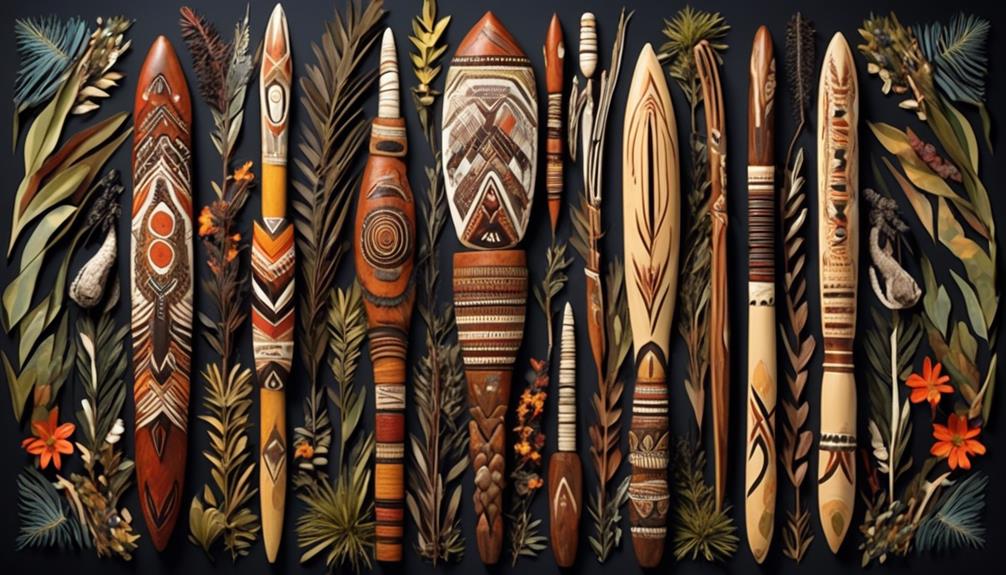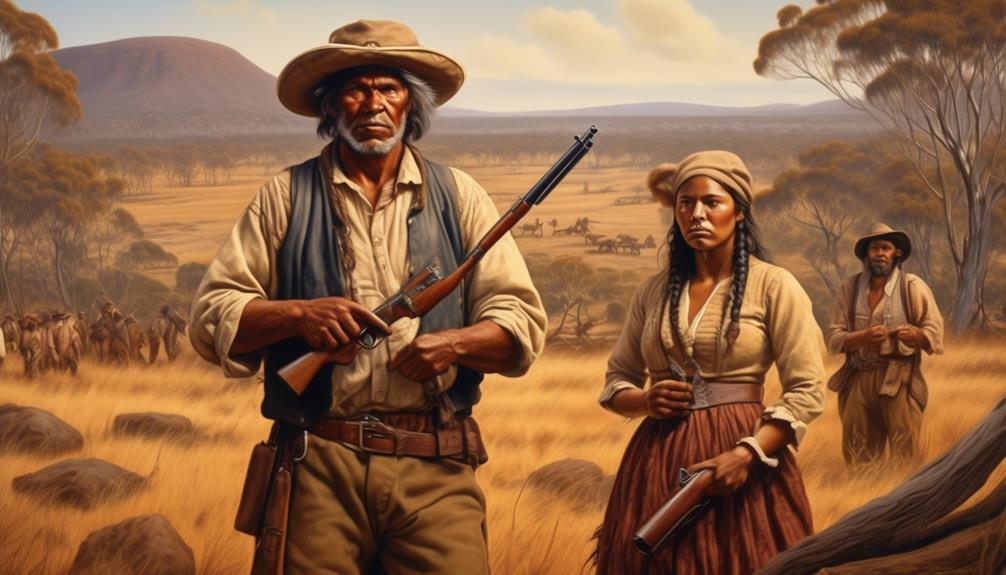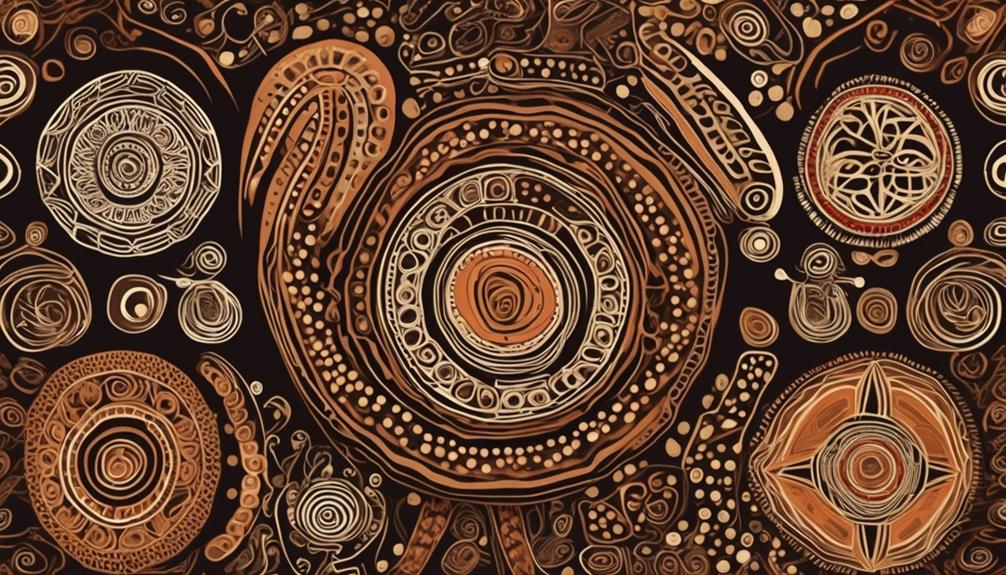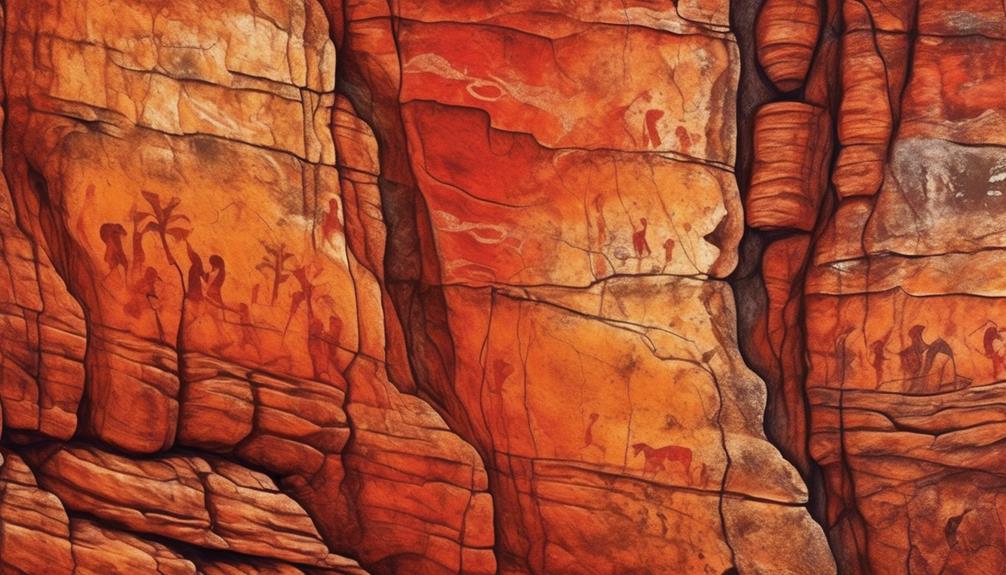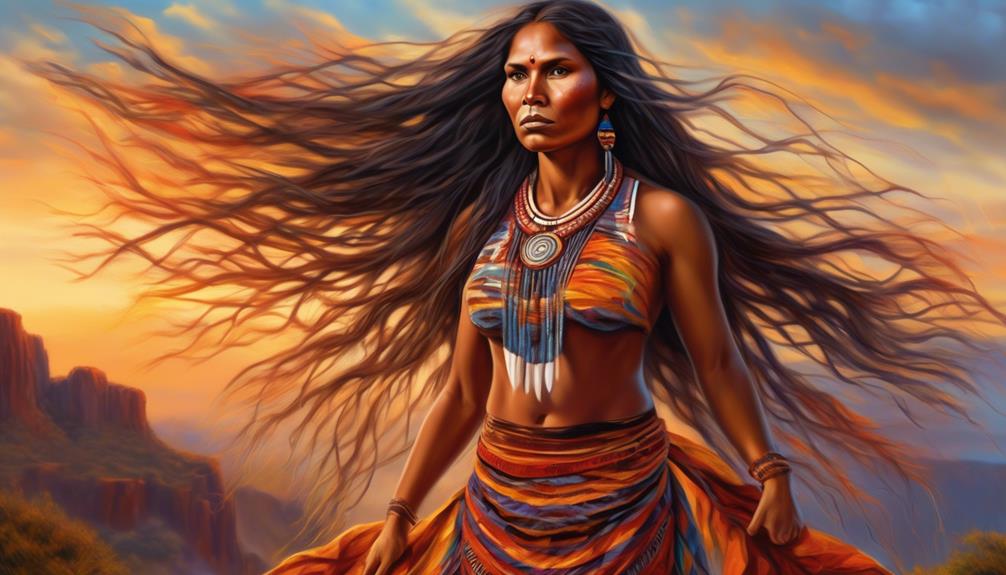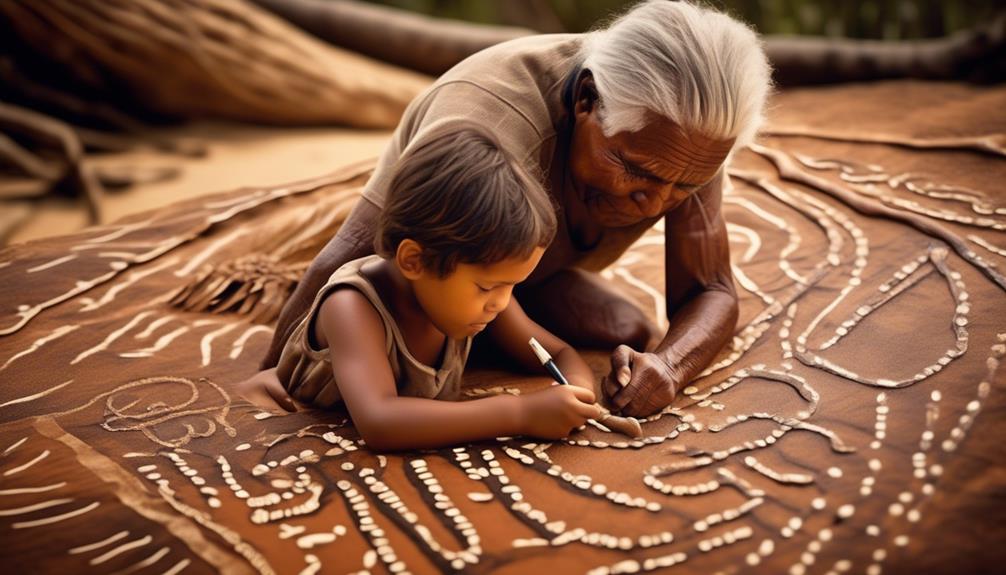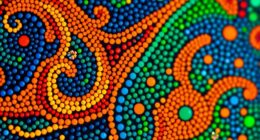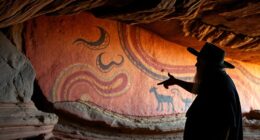You may be fascinated to learn about the wide variety of weapons that Aboriginal people have historically used. This includes a range of tools such as boomerangs, spears, clubs, and throwing sticks, which demonstrate not only their creativity but also the effectiveness of their tool-making skills.
But what set these weapons apart from others, and how did they contribute to the survival and success of Aboriginal communities? Let's explore the answers to these questions as we delve into the rich heritage of Aboriginal weaponry and its significance in their daily lives.
Key Takeaways
- Boomerangs were unique curved throwing tools used for hunting and sport, symbolizing strength, skill, and tradition.
- Spears were essential hunting tools crafted with precision and accuracy, symbolizing a connection to land and ancestral spirits.
- Clubs were versatile weapons for hunting and defense, adorned with intricate designs and reflecting cultural traditions and artistic expressions.
- Throwing sticks were versatile and skillfully crafted weapons used for hunting and warfare, with designs reflecting cultural symbols and stories.
Boomerangs
Boomerangs are a unique type of curved throwing tool that's traditionally used by Aboriginal peoples in Australia for hunting and sport. These tools aren't only sophisticated in design but also highly effective in their purpose. Boomerang hunting techniques are a testament to the ingenuity of Aboriginal hunting strategies.
The boomerang's curved shape allows it to travel in an elliptical path, making it capable of hitting a target and returning to the thrower if it misses. This feature gives hunters the advantage of multiple attempts at hitting their prey without having to retrieve the weapon each time, significantly increasing their chances of a successful hunt.
Moreover, the cultural significance of boomerangs extends beyond their practical use. They hold a revered place in Aboriginal culture, often symbolizing strength, skill, and tradition. The intricate designs and carvings on boomerangs reflect the artistic prowess of Aboriginal communities, making them valuable cultural artifacts.
In comparison to other hunting tools, boomerangs stand out for their dual significance as both practical instruments and culturally symbolic objects, representing a harmonious blend of function and tradition.
Spears
Crafted with precision and designed for accuracy, spears are essential hunting tools for Aboriginal peoples, embodying both practicality and cultural significance. The art of spear hunting has been honed over generations, with traditional techniques showcasing the unparalleled skill and knowledge of Aboriginal hunters.
Here are three key aspects that make spears an integral part of Aboriginal hunting:
- Spear hunting, traditional techniques: Aboriginal hunters utilize stealth and patience, carefully stalking their prey before expertly hurling their spears with unmatched precision. The techniques involved in spear hunting vary among different Aboriginal groups, each with its own unique methods and strategies passed down through oral traditions.
- Spear throwing, accuracy and distance: Spear throwing requires exceptional skill and technique, as hunters need to accurately gauge both the distance and speed of their target. The ability to throw a spear with remarkable accuracy and considerable distance is a testament to the incredible athleticism and proficiency of Aboriginal hunters.
- Cultural significance: Beyond its practical use, the spear holds deep cultural significance for Aboriginal peoples, symbolizing the connection to the land, the ancestral spirits, and the traditions of hunting and survival.
The mastery of spear hunting techniques exemplifies the rich cultural heritage and unparalleled expertise of Aboriginal peoples in using these iconic weapons.
Clubs
Carved from sturdy hardwood and adorned with intricate designs, Aboriginal clubs served as versatile weapons for both hunting and defense, embodying exceptional craftsmanship and strategic functionality. Traditional designs varied among different Aboriginal groups, reflecting the cultural significance of each club. These clubs weren't only weapons but also symbols of power and status within the community.
The traditional designs of Aboriginal clubs were a testament to the artistic prowess of their makers. Intricate carvings and engravings depicted stories of the land, ancestral spirits, and totemic animals, making each club a unique work of art. The cultural significance of these designs was profound, representing the spiritual connection to the land and the ancestral knowledge passed down through generations.
Comparatively, the diversity of club designs across different Aboriginal communities revealed the rich tapestry of cultural traditions and artistic expressions. Each design held a specific meaning, often representing the spiritual and natural world that surrounded the Aboriginal people. The clubs weren't only functional weapons but also embodied the deep-rooted cultural heritage of the Aboriginal communities.
Understanding the traditional designs and cultural significance of these clubs provides insight into the complex and profound relationship between the Aboriginal people and their environment.
Throwing Sticks
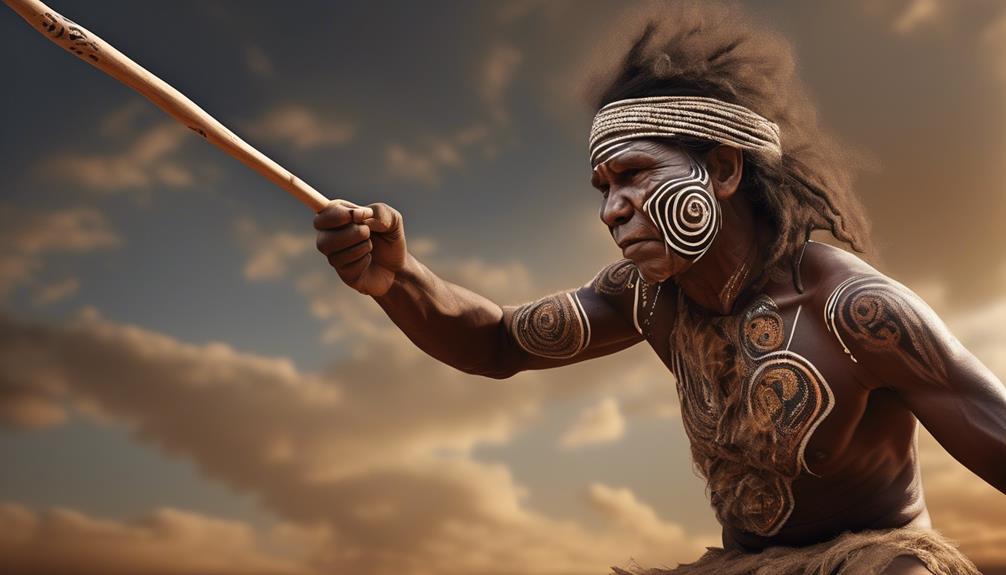
Admiring the intricate designs and cultural significance of Aboriginal clubs, one can shift focus to the equally versatile and skillfully crafted throwing sticks used by Aboriginal communities. The throwing stick, also known as a 'kylie' or 'waddy,' played a crucial role in Aboriginal hunting and warfare, showcasing the ingenuity and expertise of its makers.
Throwing techniques:
Aboriginal people perfected various throwing techniques with the throwing stick, enabling them to accurately propel the weapon at high speeds towards their target, whether it be small game for food or enemies in battle.
Hunting strategies:
Throwing sticks were essential for hunting, allowing hunters to take down prey from a distance with precision and force. This increased the efficiency of hunting efforts and provided a reliable food source for the community.
Throwing stick designs, cultural significance:
The designs of throwing sticks varied among different Aboriginal groups, often reflecting cultural symbols and stories. These weapons held deep cultural significance, embodying the traditions and beliefs of the communities that crafted and utilized them.
The throwing stick, with its diverse applications and cultural importance, stands as a testament to the resourcefulness and skill of Aboriginal weaponry.
Shields
Shields, traditionally used by Aboriginal communities for protection and defense, were integral to their survival and warfare strategies. The designs of Aboriginal shields varied greatly between different communities, reflecting the diverse environments and threats they faced. Some shields were large and oblong, providing extensive coverage, while others were smaller and more maneuverable, suited for quick movements in combat. The materials used for construction also varied, with some shields made from hardwood, others from animal hides, and some incorporating both.
The significance of shields in Aboriginal warfare can't be overstated. Not only did they offer physical protection, but they also played a symbolic role in ceremonies and rituals, representing the connection between the user and their ancestral spirits. Shields were often intricately decorated with carvings, paintings, or other adornments, serving as both practical tools and works of art.
When comparing Aboriginal shields to those used in other cultures, it becomes clear that their designs and significance were deeply intertwined with their specific cultural beliefs and environmental conditions. The adaptability and diversity of Aboriginal shield designs reflect the resourcefulness and ingenuity of these communities in their quest for survival and protection.
Frequently Asked Questions
Did Aboriginal People Use Any Other Types of Weapons Besides the Ones Mentioned in the Article?
Aboriginal people used various weapons beyond those mentioned in the article. These weapons held cultural significance and were vital for hunting and ceremonial practices.
Spears, boomerangs, and woomeras were commonly used for hunting, each serving different purposes and requiring specific techniques.
Additionally, clubs and shields were utilized for combat and protection.
The diversity of Aboriginal weapons reflects the rich and complex cultural practices and traditions of indigenous peoples.
How Were These Weapons Traditionally Made and Crafted by Aboriginal People?
Crafting weapons using traditional techniques held deep cultural significance for Aboriginal people. The craftsmanship involved in making these weapons showcased their mastery of material sourcing and skill in creating effective tools for hunting and warfare.
The traditional methods of crafting these weapons varied across different Aboriginal groups, highlighting the diversity and ingenuity of their cultures. The intricate process of making these weapons was a testament to their rich heritage and resourcefulness.
Were There Any Specific Rituals or Ceremonies Associated With the Creation or Use of These Weapons?
Ritual significance was deeply woven into Aboriginal weapon crafting techniques. The creation and use of these weapons were often accompanied by specific rituals or ceremonies, symbolizing the connection between the wielder and the natural world.
These rituals reinforced the spiritual and practical significance of the weapons, fostering a deep respect for the materials and the craftsmanship involved. Understanding the cultural and ceremonial importance of these rituals sheds light on the holistic approach to weapon making in Aboriginal culture.
How Did the Use of These Weapons Vary Between Different Aboriginal Groups and Regions?
In different Aboriginal groups and regions, the use of weapons varied significantly. Variations in weapons and regional differences were influenced by traditional crafting methods and ceremonial significance.
The diversity in terrain and available resources also contributed to the development of distinct weapon types and techniques. Understanding these variations provides valuable insight into the adaptive nature of Aboriginal communities and the ingenuity of their weapon crafting.
Are Any of These Traditional Weapons Still Used in Modern Aboriginal Culture, and if So, How Have They Been Adapted or Evolved Over Time?
In modern Aboriginal culture, traditional weapons have evolved and adapted to fit contemporary needs. The evolution of these weapons reflects the cultural significance and regional variations within Aboriginal communities.
Modern adaptations demonstrate how these tools have remained relevant and functional over time. The continued use of these traditional weapons highlights the enduring connection to ancestral practices and the ongoing importance of preserving Aboriginal heritage.
Conclusion
So, as you can see, the Aboriginal people used a variety of weapons for hunting and protection.
Take the boomerang for example – not only could it be used as a hunting tool, but it could also serve as a deadly weapon in battle.
The versatility and effectiveness of their weapons showcased the ingenuity and resourcefulness of the Aboriginal people in utilizing their natural surroundings for survival.
Nayeli is our dedicated Editor in Chief, bringing her passion for words and keen editorial eye to every piece of content we produce. With years of experience in the field, she ensures that every article and publication meets the highest standards of quality and clarity. Nayeli’s commitment to storytelling and her deep understanding of our mission make her an invaluable leader in our team.
